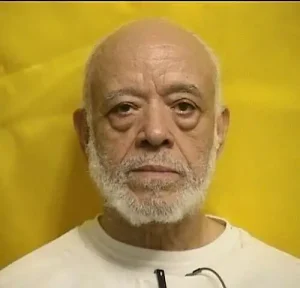Von Davis was sentenced to death by the State of Ohio for the murder of Suzette Butler
According to court documents Von Davis, who was on parole for the murder of his first wife, would murder his ex girlfriend Suzette Butler who was fatally shot outside of the an American legion
Von Davis would be arrested, convicted and sentenced to death
Von Davis Photos

Von Davis FAQ
Where Is Von Davis Now
Von Davis is incarcerated at the Chillicothe Correctional Institution
Von Davis Case
The Ohio Supreme Court today rejected the third death-penalty appeal of a Butler County man convicted of shooting and killing his ex-girlfriend in 1983.
In a 6-1 decision, the court affirmed the judgment of the Twelfth District Court of Appeals upholding his death sentence.
On December 12, 1983, Von Clark Davis, who was on parole from a murder conviction, paid a man to buy him a handgun and ammunition. The same day, he visited an American Legion post in Hamilton and talked to his ex-girlfriend, Suzette Butler. They later went outside, where Davis shot Butler multiple times.
Davis waived his right to a jury trial, and his case was heard by a three-judge panel. In 1984, the panel found him guilty of two charges, including aggravated murder with prior calculation and design with firearm and death specifications. The court imposed the death penalty.
Davis appealed to the Twelfth District Court of Appeals, which affirmed his conviction and death sentence.
On appeal, the Ohio Supreme Court in 1988 affirmed Davis’s conviction but vacated the death sentence. The Supreme Court found that one of the aggravating circumstances considered by the trial court was improper and sent the case back to the three-judge panel to resentence him on the remaining aggravating and mitigating factors.
In August 1989, the panel resentenced Davis to death. The appeals court and the Supreme Court affirmed the decision.
However, in 2007, the U.S. Court of Appeals for the Sixth Circuit held that the resentencing panel should have permitted Davis to introduce more evidence that may have lessened his punishment, and ordered that he be sentenced again.
The original three-judge panel was no longer available, so a new panel considered additional mitigating evidence in September 2009 and again applied the death penalty. The appeals court affirmed, and the Ohio Supreme Court heard oral arguments in his case last October.
Davis argued that during his 2009 resentencing he should have been permitted to withdraw his 1984 waiver of a trial by jury because he was resentenced by a different three-judge panel than the one that he agreed to have hear his case in 1984.
In today’s opinion, Justice Paul E. Pfeifer wrote that when the trial and sentencing in a capital case are held before a three-judge panel, Ohio law (R.C. 2929.06(B)) mandates that a three-judge panel must conduct the resentencing hearing. He concluded that Davis was barred by the statute from having his resentencing hearing considered by a jury.
In addition, Justice Pfeifer continued, the statute does not violate the retroactivity clause of the Ohio Constitution or the ex post facto clause of the U.S. Constitution, as Davis’s attorneys asserted. He noted that the Ohio Supreme Court determined in 2012 that the General Assembly intended R.C. 2929.06(B) to apply retroactively, and the state’s constitution does not prevent the statute from applying to cases, such as Davis’s, where an aggravated murder was committed before the statute became law but the death sentence was set aside after the enactment. Nor does the statute fall into any of the four categories of laws that would cause it to violate the U.S. Constitution, Justice Pfeifer explained.
In rejecting Davis’s remaining arguments, Justice Pfeifer wrote that the resentencing panel did consider additional mitigating evidence from Davis, and there has not been an improper or unconstitutional delay between the imposition and execution of Davis’s death sentence. The court’s independent review of his sentence determined that mitigating evidence, such as his difficult childhood, personality disorders, and advanced age, did not outweigh the aggravating factor that he had been convicted of another murder before, in 1971.
The majority opinion was joined by Chief Justice Maureen O’Connor and Justices Terrence O’Donnell, Judith Ann Lanzinger, Sharon L. Kennedy, and Judith L. French.
Justice William M. O’Neill concurred in Davis’s conviction but dissented from the court’s decision on the death sentence for the reasons stated in his dissenting opinion in State v. Wogenstahl (2013). In Wogenstahl, Justice O’Neill argued that the death penalty violates the U.S. Constitution’s prohibition against cruel and unusual punishment.
2011-0538. State v. Davis, Slip Opinion No. 2014-Ohio-1615.
https://www.courtnewsohio.gov/cases/2014/SCO/0422/110538.asp#.ZGTW487MK3A
